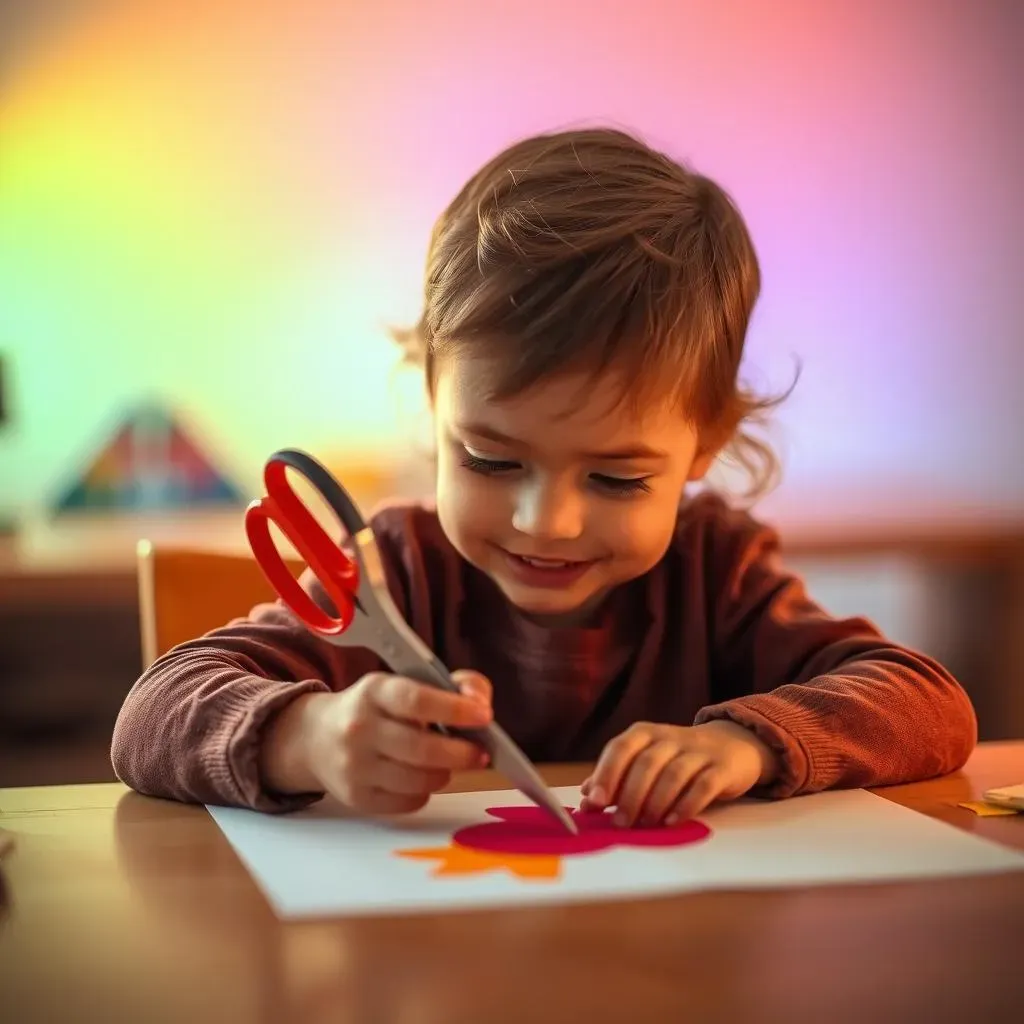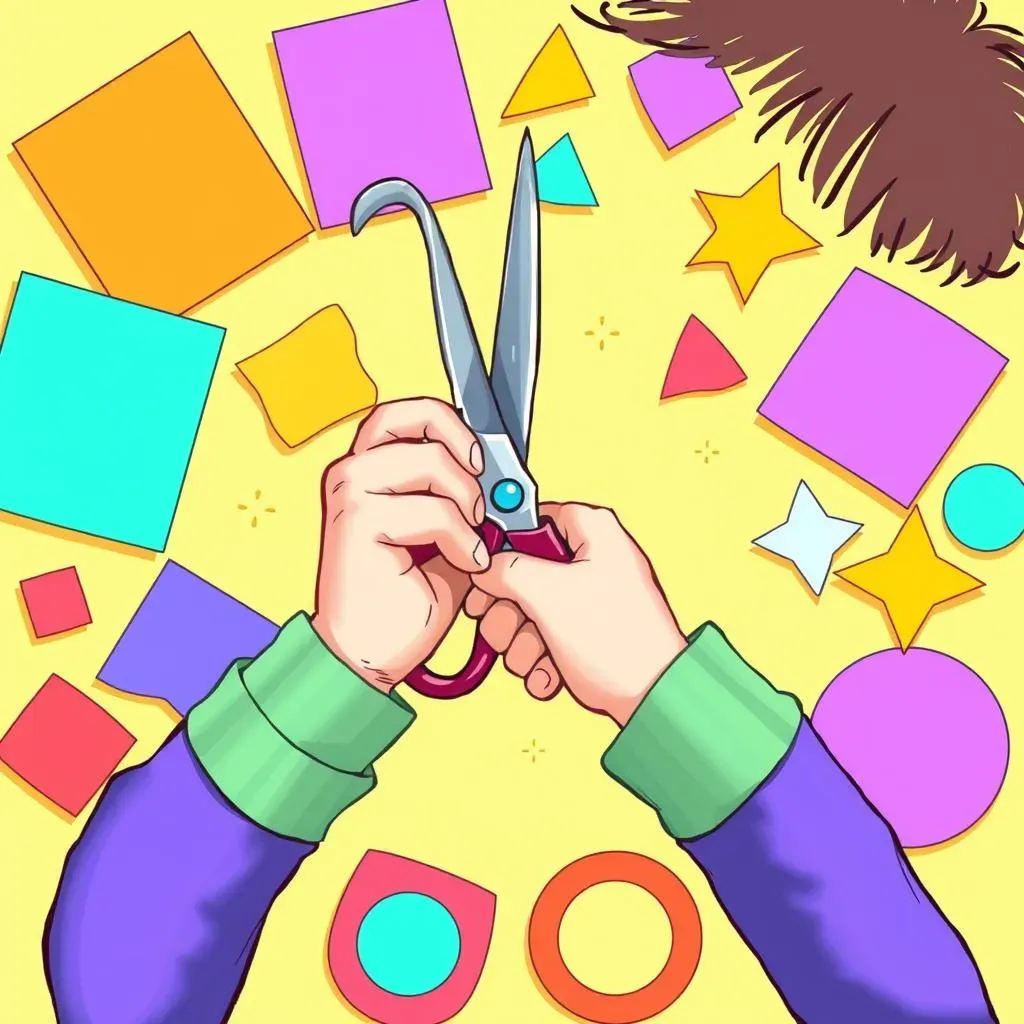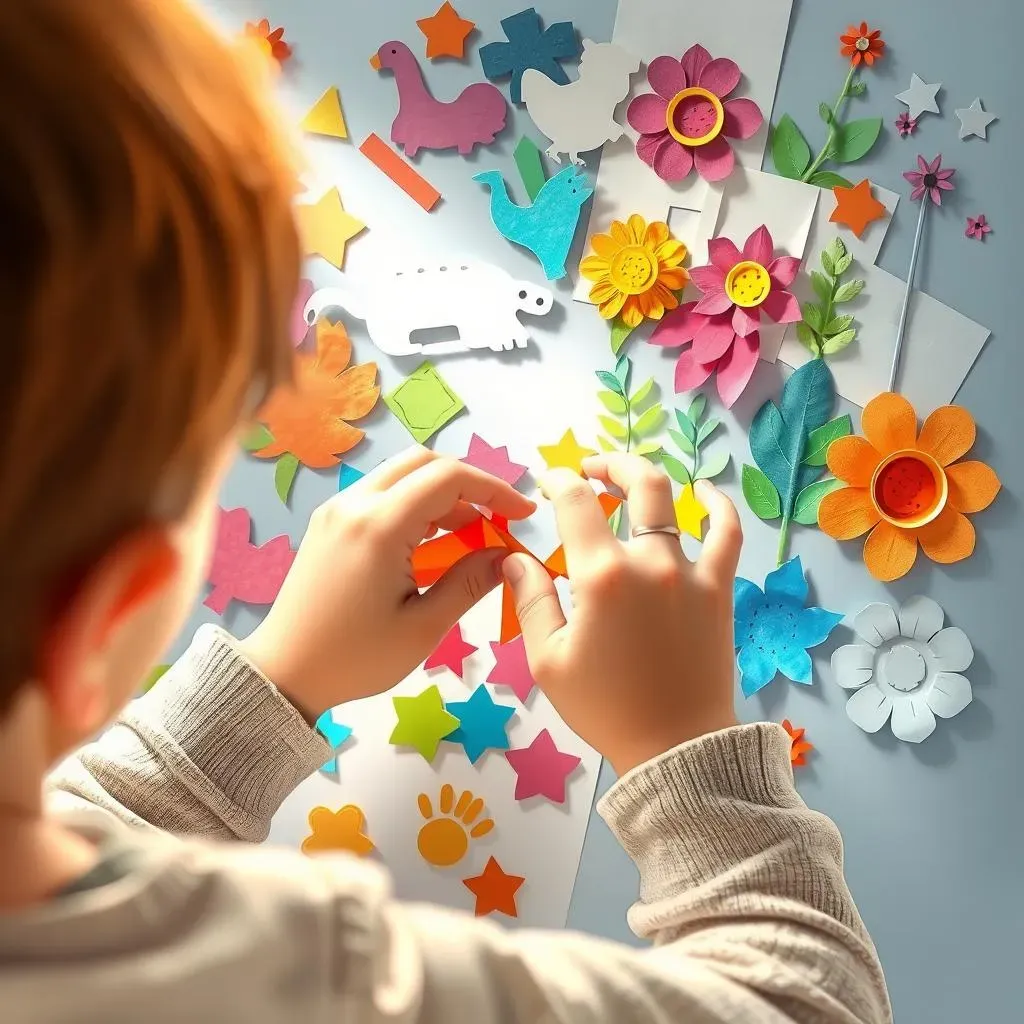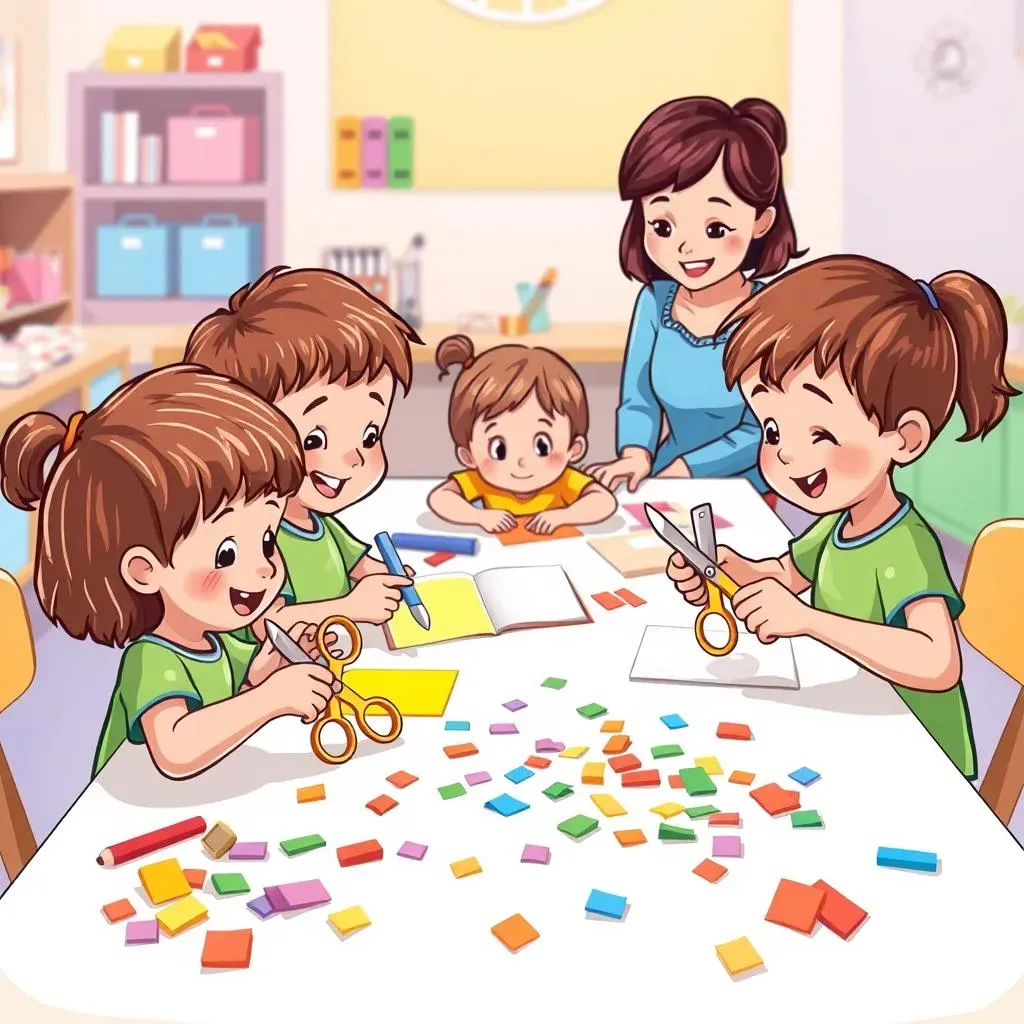Table of Contents
Ever watched a kid with a pair of scissors and some paper? It's like magic unfolding! But it's not just about making a mess; kids paper cutting is a fantastic way to boost creativity, improve those fine motor skills, and even learn a thing or two. Forget boring worksheets; we're talking about turning simple paper into awesome creations. In this guide, we'll explore why kids are so drawn to this simple yet engaging activity, and how you can make it fun and educational for them. We'll go through some easy projects perfect for little hands, showing you that paper cutting isn't just for art class, it is a tool for learning and growth. Plus, we'll cover some crucial safety tips, because let's face it, scissors can be a bit tricky. Get ready to dive into the world of paper, scissors, and endless possibilities!
Why Kids Love Paper Cutting: More Than Just Scissors
Why Kids Love Paper Cutting: More Than Just Scissors
The Allure of Transformation
Let's be honest, kids are natural explorers. They love to see how things change, and paper cutting is like a mini-magic show. A flat piece of paper becomes a snowflake, a star, or a silly monster with just a few snips. It's not just about the end result; it's about the process of making something new from something ordinary. That feeling of "I made this!" is super powerful for a kid. It’s their way of making a mark on the world, one cut at a time. It is like watching them create their own little world, just with paper and scissors, pretty amazing right?
I remember when my little cousin, Leo, first discovered paper cutting. He was so focused, his tongue poking out the corner of his mouth as he carefully followed the lines. When he was done, he held up his wonky star with such pride, it was like he had created a masterpiece. It is that type of joy that I think kids really love about paper cutting.
A Sensory Delight
Think about it, paper cutting is a multi-sensory experience. There's the sound of the scissors cutting through the paper, the feel of the paper in their hands, and of course, the visual satisfaction of seeing their creation come to life. For kids who are still learning about the world around them, these sensory experiences are incredibly valuable. It's more engaging than just looking at a picture or a screen; it's tactile and real. It’s like they are really in the game, not just watching it.
The Power of Control
Kids often have limited control over their environment, but paper cutting gives them a sense of agency. They decide where to cut, what shapes to make, and how their final piece will look. This is especially important for kids who might feel like things are often being decided for them. This sense of autonomy and control helps them build confidence and make the activity more fun. I have noticed that kids are so proud of themselves when they show off their creations, and it makes me so happy to see them so happy. It's a simple activity that can give them a big boost of self-esteem.
Sensory Element | Description | Benefit for Kids |
|---|---|---|
Sound | The sound of scissors cutting paper | Engaging and stimulating, helps with auditory awareness |
Touch | The feel of the paper and scissors | Develops fine motor skills and tactile sense |
Sight | Visual feedback of cutting and creating shapes | Enhances visual perception and spatial awareness |
Easy Paper Cutting Projects for Little Hands
Easy Paper Cutting Projects for Little Hands
Okay, so you're ready to get those little hands cutting, but where do we start? Don't worry, we are not jumping straight into complex origami here. We're talking about simple, fun projects that even the littlest ones can enjoy, with a bit of help from you of course. Think basic shapes, easy snips, and lots of room for creativity. The goal here is to build confidence, not frustration. Start with thick paper, like construction paper, because it's easier to handle than thin printer paper. We're going for success, not paper-thin tears. Remember, it’s all about the journey, not just the final masterpiece, even though those are great too!
Simple Shapes
Let's start with the basics: squares, triangles, and circles. These shapes are perfect for beginners. You can draw them on paper and have your kiddo cut along the lines. It's a good way to practice scissor skills and learn about shapes at the same time. I like to use different colors of paper to make it more fun and engaging. You can even turn these shapes into other things later, like a house or a funny face. One time, my niece used her cut out circles to make a caterpillar, it was adorable.
Fringe Fun
This one is super easy and satisfying. Just cut straight lines along the edge of a piece of paper to create a fringe. It's like giving the paper a haircut. You can then use the fringed paper to make all sorts of things, like a lion's mane or a funky grass patch. It's a great way to practice making controlled cuts and see how simple snips can create a cool effect. It also looks very satisfying to watch the paper transform, almost like magic.
Project | Description | Skills Developed |
|---|---|---|
Simple Shapes | Cutting out basic shapes like squares, triangles, and circles. | Shape recognition, scissor control, fine motor skills |
Fringe Fun | Cutting straight lines along the edge of the paper to create a fringe. | Controlled cuts, hand-eye coordination, creativity |
Paper Snowflakes | Folding paper and making simple cuts to create a snowflake pattern. | Folding skills, symmetrical cutting, spatial awareness |
Paper Snowflakes
Who doesn't love a good snowflake? It might seem tricky, but it's actually quite simple for kids. Fold a piece of paper in half, then in half again, and then into a triangle. Now, let your kiddo make some snips along the edges. When you unfold it, a beautiful snowflake appears! It’s a fantastic way to introduce symmetry and see how patterns work. I always encourage my little ones to make different designs, it is amazing to see how each one is unique.
Remember, the key here is to keep it simple and fun. Don't worry about perfection; it's all about the process of creating and exploring. Let the kids experiment and get messy. It's how they learn and grow. And who knows, maybe you'll discover a future paper artist in your midst!
Paper Cutting: A Tool for Learning and Development
Paper Cutting: A Tool for Learning and Development
Okay, so we've seen how much fun paper cutting can be, but it's more than just a playtime activity, you know? It's actually a sneaky way for kids to learn and develop crucial skills. Think of it like a workout for their brains and hands. It’s like they are playing and learning at the same time, and honestly, that’s the best way to learn, right? It's not just about making pretty shapes; it's about building a solid foundation for future learning. It's like planting a seed; you might not see the tree right away, but it's growing, that's how I see it.
Fine Motor Skills
Those little hands need practice, and paper cutting is perfect for that. Holding the scissors, making precise cuts, and manipulating the paper all help develop fine motor skills. These skills are essential for tasks like writing, buttoning clothes, and even using a fork. It's like they are training to become mini surgeons, but with paper, not people. When kids cut, they are not just making shapes, they are also sharpening their hand-eye coordination and finger strength. It’s a workout that’s both fun and productive. When I was a kid, I remember my grandmother saying that if you practice these things, you will have a better handwriting, and she was right!
Skill | Description | How Paper Cutting Helps |
|---|---|---|
Fine Motor Skills | Small muscle movements in hands and fingers | Holding scissors, making precise cuts |
Hand-Eye Coordination | Coordinating hand movements with what you see | Following lines, cutting shapes |
Bilateral Coordination | Using both hands together | Holding paper and cutting simultaneously |
Spatial Reasoning
When kids cut and create, they're also developing spatial reasoning skills. They have to think about how shapes fit together, how to fold paper to make a symmetrical design, and how to visualize the final product. It is like they are solving a puzzle with scissors and paper. It's about understanding how things exist in space and how they relate to each other. These skills are important in math, science, and even everyday life. When my son was playing with paper, it was amazing to watch him put together a house using different shapes, it was like watching a little architect working.
Creativity and Imagination
Let's not forget the power of creativity! Paper cutting allows kids to express themselves in a unique way. They can create anything they imagine, from funny monsters to beautiful flowers. There is no limit, it is like they are opening a door to their own little world. It encourages imaginative play and helps them develop their own style. It is like they are telling stories with paper and scissors. This is also a great way to see what is going on in their little heads, their thoughts and ideas will be displayed in front of you.
So, paper cutting isn't just a fun activity; it's a tool for growth. It helps kids develop essential skills, express their creativity, and learn through play. It's like a secret weapon for learning, disguised as fun. It is like they are training to become the next generation of artists, engineers, and creative minds. Let's make sure we give them the tools they need to succeed.
Safety First: Tips for a Fun and Safe Paper Cutting Experience
Safety First: Tips for a Fun and Safe Paper Cutting Experience
Okay, let's talk safety, because fun is no fun if someone gets hurt, right? We're dealing with scissors here, and while they're great for creativity, they also need a bit of respect. It's like learning to ride a bike; you need to know the rules before you start zooming around. The goal here is to create a safe and enjoyable environment for kids to explore their artistic side. I always tell my kids, safety first, then fun. It's like a secret password to a good time. This section is all about making sure we're all cutting paper, not fingers.
Choosing the Right Scissors
First things first, not all scissors are created equal. We need to pick the right ones for little hands. Look for scissors with rounded tips; they're much safer than pointy ones. Also, make sure the scissors are the right size for your child's hand. They should be comfortable to hold and easy to control. Think of it like finding the perfect pair of shoes; they should fit just right. When I was a kid, I used to use my mom’s sewing scissors, and let me tell you, that was a disaster waiting to happen. The right scissors make all the difference.
Type of Scissors | Features | Why They're Safe |
|---|---|---|
Rounded Tip Scissors | Blunt, rounded ends | Reduces the risk of accidental pokes and cuts. |
Small, Child-Sized Scissors | Designed for smaller hands | Easy to hold and control, less likely to cause strain. |
Safety Scissors | Often have plastic blades or guards | Extra layer of protection for very young children. |
Supervision is Key
This might seem obvious, but it's super important: always supervise kids when they're using scissors. Don't just leave them to their own devices. It's like being a lifeguard at a pool; you need to keep a close watch. Be there to guide them, offer help when needed, and make sure they're using the scissors safely. It's not about being a helicopter parent; it's about being a responsible one. I remember when my friend's kid decided to cut his own hair with the craft scissors, it was not pretty, and it could have been avoided with just a little bit of supervision. So, keep an eye on those little artists!
Setting Up a Safe Space
Where they cut is just as important as how they cut. Make sure they have a clear, flat surface to work on. Avoid cluttered areas, because we don’t want anything getting in the way. It’s like creating a mini art studio, but with safety in mind. A good work area helps kids focus on their cutting and avoids any accidental bumps or falls. I like to use a placemat to define the cutting space, it keeps things neat and also helps with the clean-up later. It's all about creating a safe and fun environment where creativity can thrive.
So, safety first, always. With the right scissors, proper supervision, and a safe workspace, your little ones can enjoy the fun of paper cutting without any worries. It's about being prepared and creating a space where they can explore their creativity safely. Let's cut paper, not corners, and have a fantastic time!
Snip, Snip, and Soar: The Magic of Paper Cutting
So, there you have it – kids paper cutting is way more than just a simple craft. It's a doorway to creativity, a booster for little hands, and a sneaky way to learn valuable skills. From simple snips to intricate designs, it's all about exploring, experimenting, and most importantly, having fun. So, grab those scissors, some paper, and let those little imaginations take flight. Who knows what amazing creations they will come up with? Remember, it's not about perfection, it's about the joy of making something with their own two hands. And that's something worth celebrating.